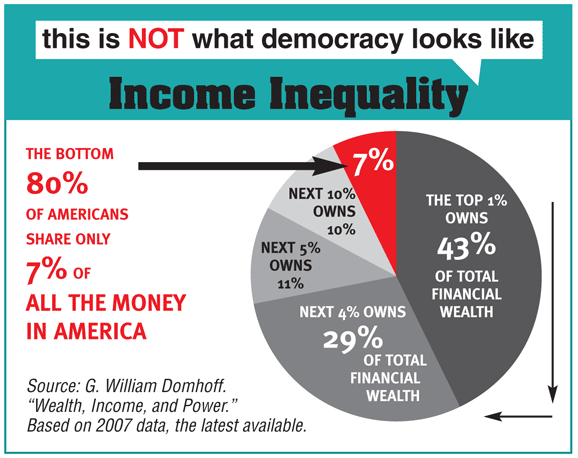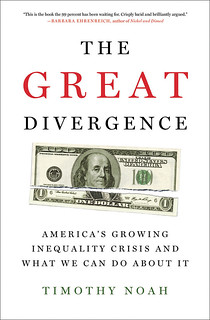Search News
For the Media
For media inquiries, call CWA Communications at 202-434-1168 or email comms@cwa-union.org. To read about CWA Members, Leadership or Industries, visit our About page.
Also in Summer 2012
- T-Mobile Campaign: The Difference That Real Bargaining Rights Make
- AT&T Workers: Fighting to Hold onto the American Dream
- What is 99% Power?
- 99 Percent Shareholder Spring
- CWA, Allies Protest TPP Trade Pact
- Who is 99 Percent Power? We All Are.
- Spreading the Word: Verizon is VeriGreedy
- Agents Face "Irreparable Harm" Over Latest Delay
- Union Workers Join Forces at American Airlines
- Working Together: Lessons from Wisconsin
- Now is the Time to Make Workers' Rights a Civil Right
- Taking on the 1% in the States
- United We Stand, Divided We Fall
Why We Need Unions

By Timothy Noah
 The age of inequality has coincided with a dramatic decline in the power of organized labor. Union membership in the United States reached its historic peak in 1979 at about 21 million, representing about 21 percent of the workforce. Today membership stands at about 15 million and represents about 12 percent. When you exclude public-employee unions (more than half of all union members today work not for a private company but for the government), union membership has dropped to about 7 percent of the private-sector workforce.
The age of inequality has coincided with a dramatic decline in the power of organized labor. Union membership in the United States reached its historic peak in 1979 at about 21 million, representing about 21 percent of the workforce. Today membership stands at about 15 million and represents about 12 percent. When you exclude public-employee unions (more than half of all union members today work not for a private company but for the government), union membership has dropped to about 7 percent of the private-sector workforce.
Draw one line on a graph charting the decline in union membership, then superimpose a second line charting the decline in middle-class income share (with “middle class” defined broadly as the middle 60 percent), and you will find that the two lines are nearly identical.
The chief purpose of a union is to maximize the income of its members. Since union workers earn, on average, 10 to 30 percent more than nonunion workers, and since union members in higher-paying occupations tend to exercise more clout than union members in lower-paying ones, you might think higher union membership would increase income inequality. But Harvard’s Richard Freeman demonstrated in a 1980 paper that at the national level unions’ ability to reduce income disparities among members outweighed other factors, and therefore their net effect was to reduce income inequality. A logical conclusion was that as union membership declined, income inequality would likely grow. And that’s what happened.
The number of union members started falling in 1979, but as a percentage of the workforce the decline actually began a generation earlier. What labor economists call “union density” peaked in 1954 at 28 percent. After 1954, union density began a slow downward slide that picked up speed in the 1980s as the absolute number of union members began to drop. The Berkeley economist David Card calculated in a 2001 paper that the decline in union membership among men explained about 15 to 20 percent of the growth in male income inequality between 1973 and 1993. In 2007 Freeman calculated that the decline of unions explained about 20 percent of the Great Divergence among all workers. In 2011 the sociologists Bruce Western of Harvard and Jake Rosenfeld of the University of Washington added in such indirect effects the threat of unionization on nonunion workers and concluded that one third of the Great Divergence among men could be attributed to the drop in union membership. “By this measure,” they concluded, “the decline of the American labor movement has added as much to men’s wage inequality as the relative increase in pay for college graduates.”
Copyright © 2012 By Timothy Noah
From: The Great Divergence by Timothy Noah
Reprinted by permission of Bloomsbury Publishing, Inc.